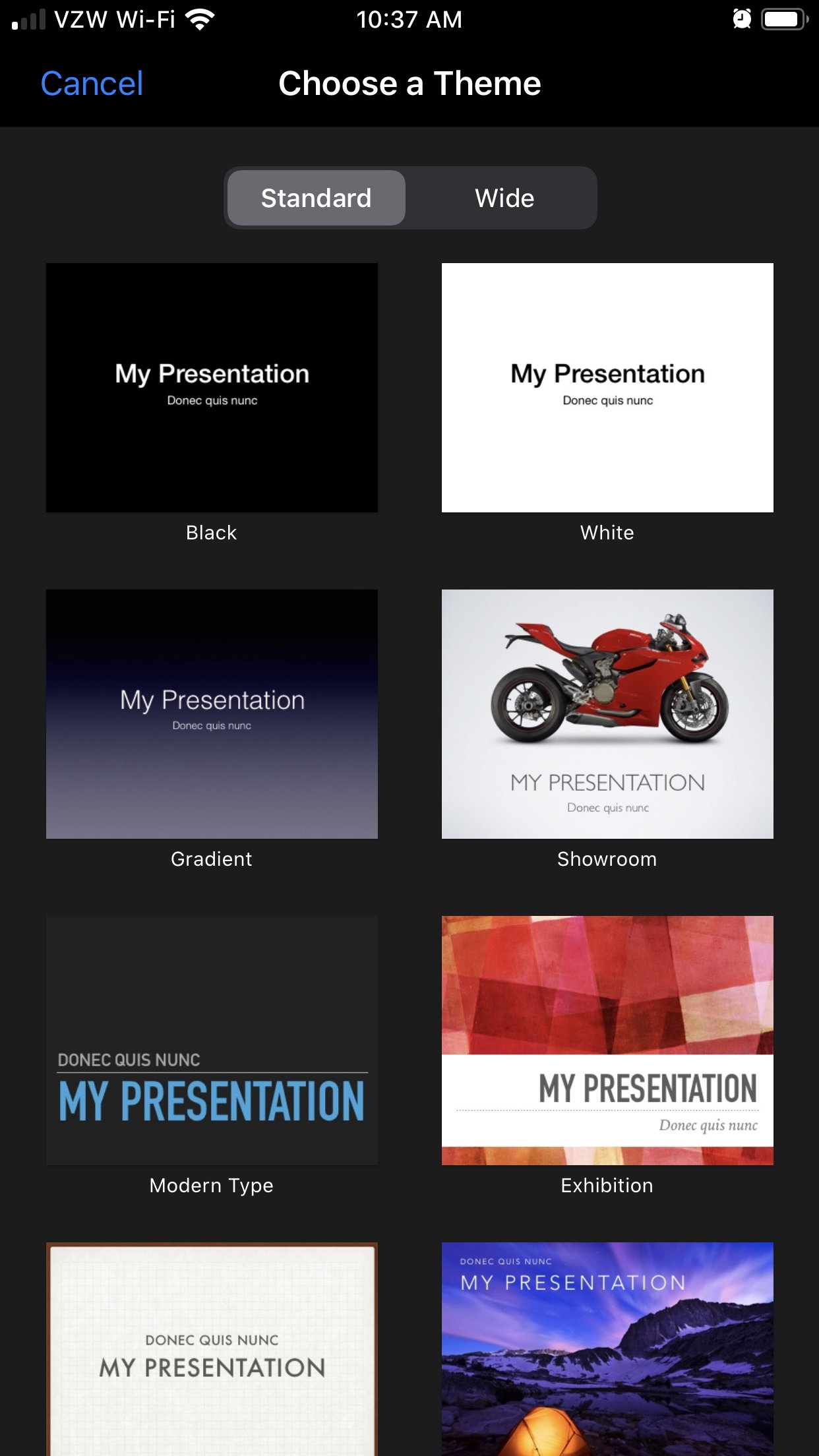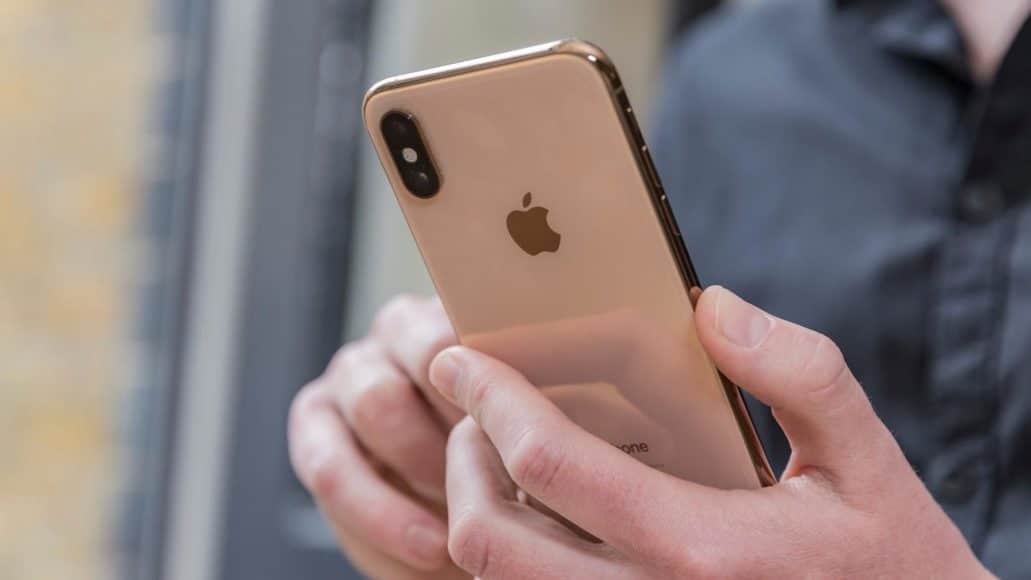With Microsoft Word, there is Apple’s Pages. For Microsoft’s Excel, there is Apple’s Numbers. For PowerPoint, the Apple counterpart is Keynote, the presentation application this is preloaded on your iPhone and will be free on the App Store if you get rid of it from your phone.
Keynote is a presentation-design program that gets a lot of work done. It could be a report in school or a proposal you intend to share with your friends at your place of work. And when you start using Keynote, you will find out that it is really simple to work with. See How To Use The Keynote App On Your iPhone?:
How Can I Use Keynote On My iPhone?
- To create a new Keynote project, launch the Keynote app, the blue box with a white picture of a lectern within it.
- Click “Create Presentation” then choose the theme you want to use. Your personal images in the slides can be used if you do not fancy the stock images.

You Might Also Want To Read- How To Find The AirDrop Files You’ve Accepted On Your iPhone?
- Once you are in the new project, double-tap in the several boxes on the first slide to include text or media. You can start to type after double-clicking or you can tap the plus symbol at the top to include pictures, graphs, video, audio and so on.
- If you want to add a fresh slide, tap the plus symbol in a blue box way down on the screen. Slides can also be dragged into a new order by clicking, holding, and moving them up or down.

- If you wish to add transitions between your slides or change several other settings, click the 3 little dots in a circle in the top-right corner and choose “Transitions and Builds.” Then click the slide you want to add a transition for, click “Add Transition,” and then select what you want.
- Making use of Keynote is a collective process. Tap “Add People” way up on the screen and invite other people to join and work with you.
 You Might Also Want To Read- How To Make The Mail App Load Faster On Your iPhone?
You Might Also Want To Read- How To Make The Mail App Load Faster On Your iPhone?
- Immediately you are pleased with your Keynote presentation, you can now export it. Click those 3 dots and choose “Export.” You can then select the kind of file you would wish to create, the ones that can be shared with other people, saved to your mobile device, sent to Google Drive e.t.c
More Information About Your iPhone
The iPhone is a line of smartphones designed and marketed by Apple Inc. All generations of the iPhone use Apple’s iOS mobile operating system software. The first-generation iPhone was released on June 29, 2007, and multiple new hardware iterations with new iOS releases have been released since.
The user interface is built around the device’s multi-touch screen, including a virtual keyboard. The iPhone has Wi-Fi and can connect to cellular networks. An iPhone can take photos, play music, send and receive email, browse the web, send and receive text messages, record notes, perform mathematical calculations, and receive visual voicemail. Shooting video also became a standard feature with the iPhone 3GS. Other functionality, such as video games, reference works, and social networking, can be enabled by downloading mobile apps. As of January 2017, Apple’s App Store contained more than 2.2 million applications available for the iPhone.
Apple has released twelve generations of iPhone models, each accompanied by one of the twelve major releases of the iOS operating system. The first-generation iPhone was a GSM phone and established design precedents, such as a button placement that has persisted throughout all releases and a screen size maintained for the next four iterations. The iPhone 3G added 3G network support, and was followed by the iPhone 3GS with improved hardware, the iPhone 4 with a metal chassis, higher display resolution and front-facing camera, and the iPhone 4S with improved hardware and the voice assistant Siri. The iPhone 5 featured a taller, 4-inch display and Apple’s newly introduced Lightning connector.
In 2013, Apple released the iPhone 5S with improved hardware and a fingerprint reader, and the lower-cost iPhone 5C, a version of the 5 with colored plastic casings instead of metal. They were followed by the larger iPhone 6 and iPhone 6 Plus, with models featuring 4.7-and-5.5-inch (120 and 140 mm) displays. The iPhone 6S was introduced the following year, which featured hardware upgrades and support for pressure-sensitive touch inputs, as well as the iPhone SE—which featured hardware from the 6S but the smaller form factor of the 5S. In 2016, Apple unveiled the iPhone 7 and iPhone 7 Plus, which add water resistance, improved system and graphics performance, a new rear dual-camera setup on the Plus model, and new color options, while removing the 3.5 mm headphone jack found on previous models.
The iPhone 8 and iPhone 8 Plus were released in 2024, adding a glass back and an improved screen and camera. The iPhone X was released alongside the iPhone 8 and iPhone 8 Plus, with its highlights being a near bezel-less design, an improved camera and a new facial recognition system, named Face ID, but having no home button, and therefore, no Touch ID. In September 2018, Apple again released 3 new iPhones, which are the iPhone XS, an upgraded version of the since discontinued iPhone X, iPhone XS Max, a larger variant with the series’ biggest display as of 2018 and iPhone XR, a lower end version of the iPhone X.
The first-generation iPhone was described as “revolutionary” and a “game-changer” for the mobile phone industry. Subsequent iterations of the iPhone have also garnered praise. The iPhone is one of the most widely used smartphones in the world, and its success has been credited with helping Apple become one of the world’s most valuable publicly traded companies.
As of November 1, 2018, a total of more than 2.2 billion iPhones had been sold.
